How to Start a Profitable Handmade Card Business
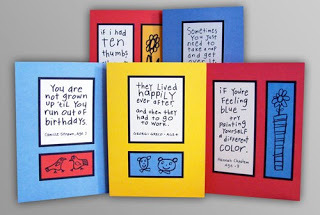 For over 15 years I ran a handmade card business with over 2,000 accounts and dozens of sales reps.
For over 15 years I ran a handmade card business with over 2,000 accounts and dozens of sales reps.People often ask me how to make a living selling handmade cards. There is a big difference between making cards to sell in a craft market, and creating a handmade card manufacturing business. There is also a big difference between a commercially printed card business and a handmade card business. Craft cards are usually one-of-a-kind that can't always be repeated, and printed cards don't require as many supplies and hand skills as handmade.
Many designers have very different experiences in beginning a business, and here are some suggestions, of steps I was starting out.

Step 1: Create a Handmade Card Line
Develop a line of 25-50 cards.Make sure you are following industry standards such as: parts of a greeting card, backcopy, card codes, envelopes.Also consider 3 basic card design tips on 3 things to avoid in a card design.Order swatch books, envelope, paper and bag samples from suppliers.

Step 2: Get Feedback
 Take cards around to local stores to get feedback. Don't try to sell them, just ask for professional advice.Experiment with different designs and styles and get feedback from the Greeting Card Designer Facebook Group or professional consultants. Try to get feedback from at least 5 people or stores.Don't rely on feedback from just friends, relatives, classmates, or anyone who doesn't work in the industry.Communicate clearly that you want brutal honest feedback, and that you won't get your feelings hurt if they don't like them. Be ready to accept rejection.If they don't like the cards, make sure you never leave that meeting without taking notes on how you can improve the line and recommendations on what direction you might pursue.
Take cards around to local stores to get feedback. Don't try to sell them, just ask for professional advice.Experiment with different designs and styles and get feedback from the Greeting Card Designer Facebook Group or professional consultants. Try to get feedback from at least 5 people or stores.Don't rely on feedback from just friends, relatives, classmates, or anyone who doesn't work in the industry.Communicate clearly that you want brutal honest feedback, and that you won't get your feelings hurt if they don't like them. Be ready to accept rejection.If they don't like the cards, make sure you never leave that meeting without taking notes on how you can improve the line and recommendations on what direction you might pursue.
Step 3: Refine and Adjust
 Readjust your designs according to your feedback. If line needs to be completely redone, start at phase 1 again. If only minor adjustments are needed, perfect them. Expand designs you do well with, and drop cards that received negative responses.
Readjust your designs according to your feedback. If line needs to be completely redone, start at phase 1 again. If only minor adjustments are needed, perfect them. Expand designs you do well with, and drop cards that received negative responses.Understand why you must manufacture on a large scale, so you can grow.Learn about handmade card production.Think about how to simply your manufacturing.Take the manufacturability test.Understand Your Pricing and ProfitsMake sure your cards are profitable. If they aren't profitable, make adjustments.Calculate your costs and see if your designs are cost effective.Keep receipts for all your supplies.Research suppliers and find several suppliers that carry the materials you need. Compare prices and find the most reasonable one.

Step 4: Get Your Business in Order
 All of the following activities may be done earlier in the business development process, but about this time is when you need to start thinking of these things.
All of the following activities may be done earlier in the business development process, but about this time is when you need to start thinking of these things.Get a PO Box. Unless your home address is very stable, get a Post Office Box. This will help keep your business separate from your personal life.Get licenses. A business license is obtained in the city where the business is located The zoning license is usually obtained with your business license, in the city where the business is located.Do you want a fictitious name? If you create a name for your business, you need to get it approved with the county clerk.Get a resale license so you don't have to pay sales tax on manufacturing supplies. A resale license is obtained at the State Board of Equalization.Get a bank account. Open a checking account for your business, separate from your personal account.Set up credit accounts with suppliers. Submit your resale number with suppliers you think you will be ordering from. Apply for a credit line.Research Stores. Start searching for the types of stores that you feel your cards will do well in. Collect their names and addresses on index cards or a database.Create a one page business plan. Make an outline of how much money you plan to spend and how much income you hope to make for the first 6 months. Talk to a lawyer. Find a lawyer that will answer basic questions about copyrights, and protecting your designs.Register your Copyright.

Step 5: Get Your Paperwork in Order
 Do you want business cards? While business cards are not necessary, they might come in handy at social functions or with media kits.
Do you want business cards? While business cards are not necessary, they might come in handy at social functions or with media kits.Design a logo and create stationery letterhead. Include your business name, your mailing and shipping addresses, a telephone number and a one line slogan of your card line. An example of a description might be: "Greeting cards for a New Age" or "Handmade cards with a touch of humor".Design a simple brochure that can be put into a loose leaf binder. Create an inexpensive brochure with all your card designs. Include a price sheet and ordering information.Decide what stores you will approach first. Clarify specifically what stores you will approach and be prepared to sell.Make sample deck. Prepare your sample deck with codes and prices per dozen/half dozen on the back.Print or buy invoices, mailing labels. Order invoices and mailing labels with your business name, address and phone number on them. Set up your books. Keep track of your supplier names and addresses, expenses, income, what cards sold per month, and any other information you need to refer to.Create a bill. Design a simple form for billing labelled "Overdue Notice". You will have to remind stores when their 30 days are up, in case they forget to pay on time.

Step 6: Practicing Selling on a small scale
 Make sure you have all your manufacturing supplies for at least sales of at least 2,000 cards.Sell cards to at least 5-10 stores in your community and learn the lifecycle of a card sale. You will also learn what your top sellers are, which will help you plan your card line for the future.Get shipping boxes. If you are on a shoestring budget, find stores that throw out small boxes (make sure they have not had food in them) and start collecting them. Otherwise find a local supplier. You can order free priority tape, mailing labels and boxes from the post office, and they will also pick up your packages for free at your doorstep when you register online. Once your business picks up, you may want to investigate other shippers such as UPS and FEDEX.Go around to local stores and try to sell your cards. Set a goal to get at least 10 accounts.
Make sure you have all your manufacturing supplies for at least sales of at least 2,000 cards.Sell cards to at least 5-10 stores in your community and learn the lifecycle of a card sale. You will also learn what your top sellers are, which will help you plan your card line for the future.Get shipping boxes. If you are on a shoestring budget, find stores that throw out small boxes (make sure they have not had food in them) and start collecting them. Otherwise find a local supplier. You can order free priority tape, mailing labels and boxes from the post office, and they will also pick up your packages for free at your doorstep when you register online. Once your business picks up, you may want to investigate other shippers such as UPS and FEDEX.Go around to local stores and try to sell your cards. Set a goal to get at least 10 accounts.
Step 7: Find Reps
 Collect rep contacts. Before actually contacting reps, start collecting their names and territories, so you can contact them later.Make sure you are ready for a rep.Contact reps. Once you have determined that stores are buying and reordering your cards, you may be ready to contact reps.Learn how to work with a rep and set up rep paperwork. Set aside a file folder for each rep. Keep records of your correspondence, commissions paid, commissions due, pre-printed labels of their mailing address (you use these a lot!).
Collect rep contacts. Before actually contacting reps, start collecting their names and territories, so you can contact them later.Make sure you are ready for a rep.Contact reps. Once you have determined that stores are buying and reordering your cards, you may be ready to contact reps.Learn how to work with a rep and set up rep paperwork. Set aside a file folder for each rep. Keep records of your correspondence, commissions paid, commissions due, pre-printed labels of their mailing address (you use these a lot!).
Step 8: Prepare to Grow
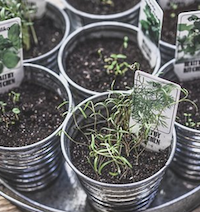 Make sure you are ready to grow and that your suppliers are dependable. Are you able to order larger quantities? Do you need to readjust your line of credit? Can you manufacturer two, three or four times as many cards? Stock up on emergency supplies that are hard to find.Evaluate workspace. Set up your workspace for assembly line work. Determine where you will store large amounts of supplies and how you will organize and label different boxes of cards.Investigate or invest in computerized record keeping. Evaluate record keeping programs such as Quickbooks. Look for programs that track inventory and commissions. Take a class at a local adult school and see which program you like.Design new cards every three months. Get into the pace of putting new cards out in the market about every three or four months.
Make sure you are ready to grow and that your suppliers are dependable. Are you able to order larger quantities? Do you need to readjust your line of credit? Can you manufacturer two, three or four times as many cards? Stock up on emergency supplies that are hard to find.Evaluate workspace. Set up your workspace for assembly line work. Determine where you will store large amounts of supplies and how you will organize and label different boxes of cards.Investigate or invest in computerized record keeping. Evaluate record keeping programs such as Quickbooks. Look for programs that track inventory and commissions. Take a class at a local adult school and see which program you like.Design new cards every three months. Get into the pace of putting new cards out in the market about every three or four months.See errors or bad links? email Greeting Card Designer Blog.

----------------------------------------------------------------------Books on The Greeting Card Business----------------------------------------------------------------------
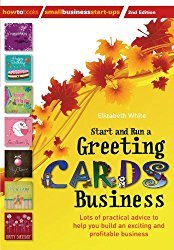 Start and Run a Greeting Card Business From a British author, whose country has a long history of greeting card design, she takes you step-by-step through the process of starting and running your business with lots of useful practical advice to help you, including: - Deciding what type of cards to produce - Finding your market - Dealing with printers - Copyright and licensing - Pricing and profit. Kate's note: Some specs are different (card sizes) since it is UK standards.
Start and Run a Greeting Card Business From a British author, whose country has a long history of greeting card design, she takes you step-by-step through the process of starting and running your business with lots of useful practical advice to help you, including: - Deciding what type of cards to produce - Finding your market - Dealing with printers - Copyright and licensing - Pricing and profit. Kate's note: Some specs are different (card sizes) since it is UK standards. Greeting Card Design This volume features a vast array of fun, elegant, simple and imaginative greeting cards designed by internationally-known artists, illustrators and calligraphers. With over 300 full-color photographs of creative, popular, and inspiring greeting card designs, this invaluable sourcebook showcases the very best of what is happening in the industry today. Accompanying text explores the history of the greeting card industry and examines the major contributions from the leading innovative companies.
Greeting Card Design This volume features a vast array of fun, elegant, simple and imaginative greeting cards designed by internationally-known artists, illustrators and calligraphers. With over 300 full-color photographs of creative, popular, and inspiring greeting card designs, this invaluable sourcebook showcases the very best of what is happening in the industry today. Accompanying text explores the history of the greeting card industry and examines the major contributions from the leading innovative companies.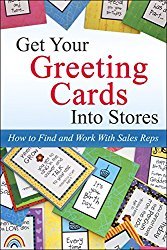
 Get Your Greeting Cards Into Stores: How to Find and Work With Sales Reps If you already make your own greeting cards, this book explains how to get your cards into stores and sell them sell nationwide. Included are guidelines on: how to price your cards for a profit, how to get professional feedback, where to find a sales representative and and what industry standards you should follow. All the information is also applicable to gift items, such as magnets, journals, calendars, collectibles, etc. Chapter topics: Getting Professional Feedback, Getting Your First Account, Pricing and Profits, Sales Reps 101, Where to Find Reps, Rep Readiness Checklist, Pitching Your Line to a Rep and Working With Reps.
Get Your Greeting Cards Into Stores: How to Find and Work With Sales Reps If you already make your own greeting cards, this book explains how to get your cards into stores and sell them sell nationwide. Included are guidelines on: how to price your cards for a profit, how to get professional feedback, where to find a sales representative and and what industry standards you should follow. All the information is also applicable to gift items, such as magnets, journals, calendars, collectibles, etc. Chapter topics: Getting Professional Feedback, Getting Your First Account, Pricing and Profits, Sales Reps 101, Where to Find Reps, Rep Readiness Checklist, Pitching Your Line to a Rep and Working With Reps.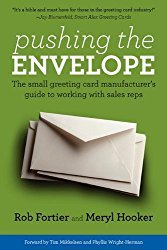 Pushing the Envelope Things the small greeting card manufacturer needs to know about finding, recruiting and retaining a winning sales force can be found in this easy-to-read handbook. Written from both the manufacturer and sales rep perspectives, this nuts and bolts guide is full of industry information, sales tips and guidance for building successful and profitable rep relationships. Kate's Note: This book was written by my top selling sales rep in the country.
Pushing the Envelope Things the small greeting card manufacturer needs to know about finding, recruiting and retaining a winning sales force can be found in this easy-to-read handbook. Written from both the manufacturer and sales rep perspectives, this nuts and bolts guide is full of industry information, sales tips and guidance for building successful and profitable rep relationships. Kate's Note: This book was written by my top selling sales rep in the country.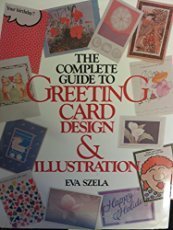 Greeting Card Design and Illustration 12 step-by-step demonstrations show how to create successful greeting cards Samples of 130 actual greeting cards Twelve step-by-step demonstrations by professional greeting card artists show you how to combine basic illustration techniques with the eight most popular mediums. This art technique book is a comprehensive and practical guide to all aspects of designing and creating professional greeting cards.Samples of 130 actual greeting cards.leads you through every stage of the design process.
Greeting Card Design and Illustration 12 step-by-step demonstrations show how to create successful greeting cards Samples of 130 actual greeting cards Twelve step-by-step demonstrations by professional greeting card artists show you how to combine basic illustration techniques with the eight most popular mediums. This art technique book is a comprehensive and practical guide to all aspects of designing and creating professional greeting cards.Samples of 130 actual greeting cards.leads you through every stage of the design process.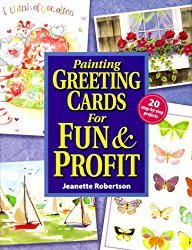 Painting Greeting Cards for Fun and Profit The author and a group of other successful greeting card artists offer friendly and practical business advice on all aspects of producing, publishing, pricing, packaging and marketing greeting cards
Painting Greeting Cards for Fun and Profit The author and a group of other successful greeting card artists offer friendly and practical business advice on all aspects of producing, publishing, pricing, packaging and marketing greeting cards By the Batch Innovative new ideas for creating fabulous cards (and envelopes, tags, and bookmarks) in batches, with impressive results. The wide range of techniques presented includes everything from the tried and true (rubber stamping) to the unexpected (polymer clay), from the spontaneous (smudge-and-smear) to the whimsical (shaped cards). And author Judi Kauffman shows precisely how to put pedal to the metal and create whole batches of cards in just one sitting. Kate's Note: See my book review here with photos and information.
By the Batch Innovative new ideas for creating fabulous cards (and envelopes, tags, and bookmarks) in batches, with impressive results. The wide range of techniques presented includes everything from the tried and true (rubber stamping) to the unexpected (polymer clay), from the spontaneous (smudge-and-smear) to the whimsical (shaped cards). And author Judi Kauffman shows precisely how to put pedal to the metal and create whole batches of cards in just one sitting. Kate's Note: See my book review here with photos and information.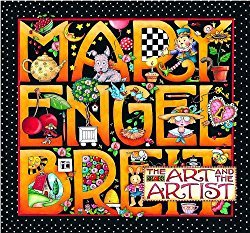 Mary Engelbreit: The Art and the Artist This book is about her path into art licensing and greeting card design. She is now a successful licensor, her career spans over decades, and she was awarded "best art license of the year" by LIMA. Kate’s Note: See my book review on "7 things I learned from Mary". This book is one of the more encouraging and practical books I've read in awhile. She confirmed my inherent belief that if someone tries to impose rules and prerequisites on entering this career, someone else will come along, break all the rules, and become successful.
Mary Engelbreit: The Art and the Artist This book is about her path into art licensing and greeting card design. She is now a successful licensor, her career spans over decades, and she was awarded "best art license of the year" by LIMA. Kate’s Note: See my book review on "7 things I learned from Mary". This book is one of the more encouraging and practical books I've read in awhile. She confirmed my inherent belief that if someone tries to impose rules and prerequisites on entering this career, someone else will come along, break all the rules, and become successful.Sign up for monthly free coloring pages: http://kateharperblog.blogspot.com/20...





Published on January 03, 2017 15:01
No comments have been added yet.
Kate Harper's Blog
- Kate Harper's profile
- 4 followers
Kate Harper isn't a Goodreads Author
(yet),
but they
do have a blog,
so here are some recent posts imported from
their feed.



